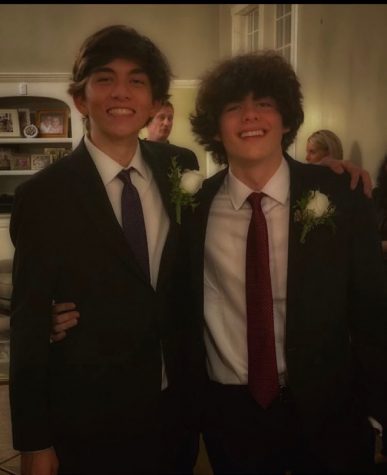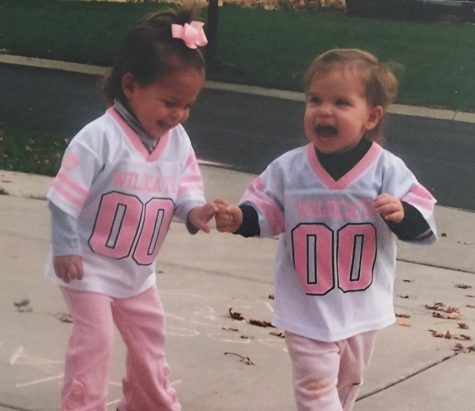Comparing Kids
Two sets of twins explain pressures of individualism
Seniors Ben Knops and Nate Knops are twins but, despite common misconceptions, do not have a lot in common. Regardless of the stereotype, they both enjoy being twins.
“It’s nice to have a sibling when they are the same age as you,” Nate said. “You can always hang out with somebody and not be bored. I think it’s pretty fun.”
The Knops twins see themselves as normal siblings, but they still get compared by their peers.
“[We] definitely [are compared] because they see us together more,” Nate said.
Growing up, Nate and Ben were interested in different activities and didn’t feel like they had to do similar hobbies.
“When you’re little, you start to do different things on purpose and then you start to become more of an individual,” Ben said. “That just keeps going on and on until you’re completely different people — like me and Nate.”
Nate had a similar outlook to the idea of growing up as twins.
“We were always together growing up — [then] we started doing different things and started liking different things,” Nate said. “As a kid, you’re kind of the same person basically. Then you grow up [and] start becoming your own person.”
Despite having different interests, Nate and Ben have kept similar friends and personality traits as they continue to grow up.
“Something we have in common [is our] friend group,” Nate said. “We’re actually not that different personality wise — most of the time.”
Although twins often are compared, the Knops enjoy being able to go through the phases of life together.
“Being a twin has made it a lot easier to go into situations that are new and maybe scary, because I know Nate’s going through that same situation,” Ben said. “It’s helped me become more confident doing new things like socializing.”
Nate and Ben want others to know that having a twin isn’t that different than having another sibling.
“It’s basically just like having a brother,” Nate said.
Juniors Ava Quigley and Ella Quigley are also twins but unlike the Knops, they are identical and enjoy a lot of the same hobbies.
“In middle school and still even now, we have the same friend group and a lot of same interests,” Ava said. “As we’ve grown older, we’ve definitely matured and realize we can be our own person because [we] grew up with our older sisters being twins, too.”
Similar to the Knops, the Quigleys enjoy being twins.
 “Even when we were younger, she always had my back,” Ella said. “You always have someone with you during tough times — like the first day of kindergarten.”
“Even when we were younger, she always had my back,” Ella said. “You always have someone with you during tough times — like the first day of kindergarten.”
A unique trait about the Quigley family is they have two sets of twins. This allowed for the pair to look up to their older sisters and learn from them. While growing up, they were often compared due to their similarities.
“When we were little, it was kind of the opposite of Ben and Nate because my parents actually always wanted us to do the same stuff,” Ava said. “As we’ve grown up, we’ve kind of done our own thing. Instead of being more like the sister relationship, we’ve developed more of a friend relationship, which is really nice.”
The pressure of competing against one another was prevalent in their childhood and now in high school.
“We’re obviously the same age, we’re in the same grade, [and] going to Blue Valley, we take similar classes — we have the same exact schedule [with the] same teachers,” Ella said. “I wouldn’t say it’s like a competition but sometimes it’s hard because we’re just trying to, especially through sports, do our best.”
Individuality was difficult for the twins to overcome due to peers; however, they have continued to be their authentic selves.
“We do different activities in the school,” Ella said. “We definitely have different interests, and I think we’ve realized that through the different experiences we’ve experienced.”
While the twins may appear similar, that doesn’t mean they are the same person.

Rylee Bergmann is a senior and first-year staff member. She is a big business girl as she is in DECA. She frequently makes tik toks (follow her @rybreaddd13),...



